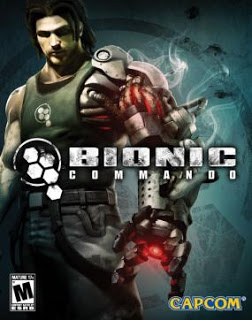Spoiled Treasures and Guilty Pleasures: The Bad Good Game and the Good Bad Game
Reviewing games is harder than it looks. Particularly when the reviewer is tasked with summing up a twenty, forty, or even eighty hour experience into a single number.
The problem is that games are multidimensional. Rarely is a game simply good or bad - most are more complicated than that. An RPG might have a weak plot, but excellent characterization. A platformer might have ugly graphics, but compelling gameplay.
Every so often you’ll encounter a game that stubbornly straddles the line and defies binary judgment. It has solid reasons to be considered both good and bad. Reviews of such games tend not to score them very well, but of course that only tells part of the story. Depending on which side of the fence they fall on, they may be a Bad Good Game or a Good Bad Game.
Bad Good Game: Finding one of these is a disappointment. The game’s foundation is solid, but surface-level flaws get in the way of what should be fun about it. It could have been a good game if the developers had just a bit more time, money, vision, or freedom from meddling.
Good Bad Game: Finding one of these is a pleasant surprise. The game’s foundation is weak, but the deep-running flaws don’t get in the way of what’s fun about it. It could have been a bad game, but there is something about it that rescues it.

The frustrating truth is that it very easily could have been a good game. Its most glaring flaws are all right on the surface, easily changed. The foundation of the game - swinging on a bionic arm through a playground of a ruined city, with gorgeous presentation and a beautiful soundtrack, and the occasional epic set-piece boss fight - is solid. What went wrong?
The swinging mechanic, fun as it is, takes some time to master. Consequently, the first hours of gameplay are crucial - this is where the player will either feel like they are getting the hang of a new fun way to interact with a game world, and thus want to keep playing, or feel blocked out by a frustrating and unforgiving learning curve, and thus want to hurl the controller at the screen. Unfortunately, Bionic Commando makes several decisions that shove it solidly toward the latter experience.
The game makes its stance clear as early as the difficulty selection screen: there is no “Easy” mode. The lightest difficulty listed is “Normal.” They could have called their easiest mode “Easy,” but they didn’t want to. They wanted to let you know right away that this is not a game for people who play on “Easy.”
Start playing, and you soon learn the game’s navigable areas are enclosed by deadly blue clouds of radiation - but they aren’t always clearly demarcated, and it’s all too easy to accidentally swing into one and then not have time to swing back out before you die. When it’s not the environmental hazards bringing you surprise death, it’s the combat. Like many post-Gears of War shooters, Bionic Commando indicates your health implicitly, by making the edges of the screen appear dirty, rather than using an explicit life meter. But the iconography is unclear, and it’s very hard to tell how close you are to death.
Whichever way you do die, you are gifted with another sign of the game’s philosophy - an actual, honest-to-goodness “GAME OVER” message. This is a game released in 2009, and it says “GAME OVER” when you die.
Once the message passes, you will find yourself back at the closest checkpoint, which is sometimes quite a way back. Since you passed this checkpoint, you may have found some hidden collectibles or completed some challenges in the game’s well-integrated Achievement system, but dying resets this progress as well. This turns what should be a fun and rewarding series of side objectives into just another way to punish the player. Why go out of your way to snatch the collectible dangling over the pit, or kill five enemies with one grenade, when all you have to do is get a bit unlucky with the combat or the environment and the accomplishment is taken away and must be repeated?
The cumulative result of all this frustration is that only the most dedicated or self-punishing fans (*cough* *cough* me *cough*) will make it through the first few hours and master the mechanics well enough to spend most of their playtime actually playing and enjoying, instead of staring at the “GAME OVER” screen. It’s no wonder the game sold so poorly.
But every one of these flaws is a surface-level design decision, easily fixed. This illustrates exactly why the Bad Good Game can be so heart-wrenching. It could have been good, so easily. Players could have embraced this game. A beloved franchise could have been revitalized. A struggling developer could have made good, instead of collapsing. Instead, the flaws block players from the good game inside. One must dig deeply and patiently to find it. And most people have better things to do with their time.

Onechanbara: Bikini Zombie Slayers should be a bad game. The translation is poor, the plot shallow, the menu confusing, the gameplay repetitive, the level-design uninspired. But just like a B-movie, it takes a certain unapologetic glee in what it is. The game never pretends to be anything more than a toy for people who like scantily-clad women and zombie hordes.
The main character goes after zombies in an outfit consisting of a bikini, cowboy hat, and feather boa. Zombies rise from the ground everywhere - apparently everything in this town was built on a graveyard, from the pedestrian mall to the second floor of the hospital. The game puts on no pretensions whatsoever, and never lets logic or anything else get in the way of delivering (a) bikinis, (b) zombies, (c) slaying.
The weak translation and confusing UI leave you uncertain what you’re doing in many cases, such as when you’re assigning level-up points to your character’s cryptically-named stats, or hunting for the “Save” command hidden in the “Options” sub-menu, but this doesn’t really matter. All that matters is that you are, in fact, a Bikini Zombie Slayer.
The key point here is that the flaws do not get in the way of what you came for. Yes, the poor translation leaves the paper-thin plot even more inscrutable than it’d otherwise be, but if you picked up a game called Bikini Zombie Slayers looking to be wowed by the plot, then you have strange ideas about how the world works.
So what’s left? Fun. Mindless fun and eye-candy. And the perfect stress release valve I’ve been looking for in games for years. After a morning of tussling with DMV paperwork, I thought to myself, “You know what would be perfect right now? Slicing dozens and dozens of zombies clean in half.” I picked up the Wiimote and played some Onechanbara, and damn if it didn’t make me feel a million times better.
Simply put, a game doesn’t have to be revolutionary to be a good time. It doesn’t have to be polished, or even solidly built. Sometimes, all it has to do is combine a few straightforwardly-fun elements and let the player have at them.
Neither of these games has impressive review scores. Bionic Commando nabs a 70 or 71 on Metacritic, depending which platform you check. Meanwhile, Onechanbara only manages a 55. But these numbers alone don’t mean you’d dislike these games - or, for that matter, that you’d enjoy Bionic Commando more than you’d enjoy Onechanbara.
So as a player, what do you need to do? Look past a number. Look to the game’s strengths and weaknesses, and consider whether they line up with what you enjoy in a game. Review formats like that used by Kotaku make this a simpler task, delivering instead of a number a list of things the reviewer loved and hated about the game. It’s easy enough to look through this list and see how many of the things the game does well and how many of the things it does poorly are things you care about. Not everyone plays games for the same reasons, and nobody’s reasons are any more valid than anyone else’s.
Never let a number talk you out of having fun.